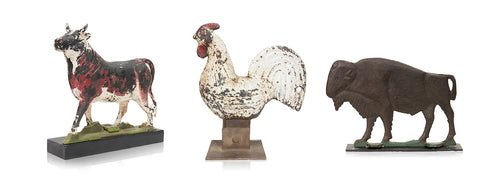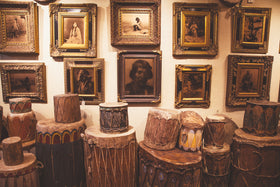Echoes of the Wind: Collecting Antique Windmill Weights

As we traverse the vast landscapes of agricultural history, one often-overlooked yet fascinating artifact emerges—the antique windmill weight. These silent witnesses to the bygone era of windmills hold not only intrinsic historical value but also a captivating story of agricultural innovation and craftsmanship. In this article, we'll explore the intertwined histories of windmills and their weights, shed light on why collectors are drawn to these relics, and highlight the cultural importance of preserving agricultural advertising through the lens of these timeless treasures.
The History of Windmills:
The use of windmills for harnessing wind power dates back centuries, with their origins rooted in Persia around the 9th century. Over time, windmills spread across continents, becoming indispensable tools for milling grain, pumping water, and powering various mechanical processes. The heyday of windmills in America spanned the 19th and early 20th centuries, transforming the landscape and agricultural practices.

Sketch of the Dempster Mill. Beatrice, Nebraska.
The Emergence of Windmill Weights:
In tandem with the rise of windmills, the use of windmill weights became widespread. These cast-iron counterweights were strategically placed on windmill vanes to balance the rotating blades, or as governor weights which were later replaced by springs. Over time, windmill weights evolved from purely functional components to ornate pieces, often featuring recognizable designs, motifs, and the logos of agricultural companies.
Examples of Fairbury, Elgin, and Dempster windmill weights.
Why Collect Antique Windmill Weights:
Collectors are drawn to antique windmill weights for various reasons. Beyond their functional history, these weights serve as tangible relics of a bygone era. Their diverse designs and company logos offer a unique window into the agricultural advertising of the past, making them sought-after additions to collections. The patina acquired over years of exposure to the elements adds an extra layer of authenticity, contributing to their appeal among collectors.
Cultural Importance of Collecting Agricultural Advertising:
The act of collecting antique windmill weights extends beyond personal interest, contributing to the preservation of agricultural advertising history. These weights often bear the logos of companies that were instrumental in the agricultural landscape, becoming valuable artifacts that tell the story of innovation, progress, and the symbiotic relationship between industry and farming. Examples of commonly collected companies include Dempster, Elgin, and Eclipse, each with its unique design elements that reflect the era in which they were produced.
Antique windmill weights stand as silent sentinels, echoing the winds of change that swept across agricultural landscapes. Collectors find not just physical artifacts in these weights but a connection to a rich history, a testament to human ingenuity, and a visual representation of the evolution of agricultural advertising.




